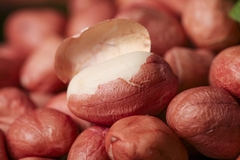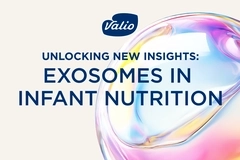HMOs crucial for infants in establishing life-long healthy gut, study notes
25 Oct 2018 --- The development of a healthy microbiome hinges on the first two and a half years of life, with Bifidobacterium, abundant in breast milk, shaping a healthy gut. This is among the main findings from research conducted at Newcastle University. Ultimately, the findings highlight the importance of breastfeeding and human milk oligosaccharides (HMOs) – which promote a healthy gut – in breast milk substitute for infants.

“The findings that breastfeeding is the number one factor in shaping how the bacterial community in the gut develop are important and suggest these bacteria enriched by breast milk may be important early in life. The research comes at a time when infant nutrition and the gut microbiome are of huge interest. The third major solid component of breast milk is human milk oligosaccharides (HMOs), which exist not to feed the baby, but to feed the baby’s bacteria in their gut,” Christopher Stewart, Research Fellow at Newcastle University, Institute of Cellular Medicine, tells NutritionInsight.
“Ultimately, it may be of interest to the nutrition industry to add certain breast milk components, such as HMOs, to formula in order to enrich certain potentially beneficial bacteria in the infant gut,” he adds.
The research, published in Nature, is one of the largest clinical microbiome studies in babies to date.
The study used 12,500 stool samples from 903 children involved in the TEDDY (The Environmental Determinants of Diabetes in the Young) study. Microbiome composition and diversity changed over time in three distinct phases: the developmental phase (3-14 months), transitional phase (15-30 months) and stable phase (31 months onwards).
The research revealed that once infants were weaned, there was a rapid turnover in the bacterial community and a loss of most of the Bifidobacterium, replaced by bacteria within the Firmicutes phyla. Firmicutes are typical of an adult microbiome and the appearance of these bacteria once breastfeeding was stopped occurred much quicker than experts expected.
Vaginal birth was also associated with a temporary increase in Bacteroides bacteria. Siblings, exposure to pets and geographical location were also factors in the differences between microbiome profiles. These findings surprised the researchers, Stewart tells NutritionInsight.
“Because a diet without breast milk delivers different nutrients to the gut, this rapid turnover in the bacterial community is likely to be in response to the new food sources promoting the growth of a different community,” he says.
“Remarkably, from this point on, the microbiome progressed quickly towards being stable, where the bacteria in the gut will potentially remain roughly the same for the rest of that individual's life.”
Future research should investigate how exactly breast milk enriches certain bacteria, as well as whether probiotics can offer the same health benefits of being breastfed, Stewart explains.
“For this we need more clinical studies, but more importantly we need basic science investigations in the laboratory using model systems to understand how diet-microbiome-host are interlinked,” he concludes.
The benefits of breastfeeding are well accepted, with the World Health Organization (WHO) recommending breastfeeding for infants. However, in bids to mimic the health benefits of breast milk, manufacturers are continuously innovating in the area of HMO’s for the incorporation in breast milk substitutes, for example. You can read more about the R&D challenges they often face here.
By Laxmi Haigh
















